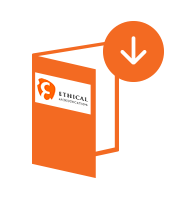Clinical endpoint adjudication does not have to include medical images review. But more often than not, it does; and when it comes to medical imaging, the DICOM standard is undoubtably the norm. So, rather than “should we integrate DICOM in our adjudication process” the question should be “how should we best integrate it”.
Let’s begin with a bit of history. Until the early 1980’s, medical imaging review consisted mostly in printing x-ray negatives and sending them by mail to radiology experts; it was very difficult for anyone other than manufacturers of computed tomography (CT) or magnetic resonance imaging (MRI) devices to decode the digital images that their machines generated. In 1983, the American College of Radiology (ACR) and the National Electrical Manufacturers Association (NEMA) formed a standards committee to “meet the combined needs of radiologists, physicists and equipment vendors”. In 1985, the first standard covering point-to-point image communication, ACR-NEMA 300, was released and, in 1993, the name was changed to DICOM (Digital Imaging and Communications in Medicine). Today, DICOM is everywhere and has become the de facto standard for digital communication and storage of medical images.
According to the official DICOM website (www.dicomstandard.org), DICOM: 1) makes medical imaging information interoperable, 2) integrates image-acquisition devices, PACS, workstations, VNAs and printers from different manufacturers, 3) is actively developed and maintained to meet the evolving technologies and needs of medical imaging and 4) is free to download and use. Impressive! The real advantage of DICOM, however, lies in the ability to separate the pixel-based image from the associated metadata, making anonymization or encryption of identifiers for data privacy compliance an easy process.
The popularity of DICOM is such that IT companies have specialized in the development of PACS (Picture Archiving and Communication Systems) for the efficient and secure storage and transmission of DICOM images. In addition, because DICOM is an open standard, a variety of viewers and other tools are available for free.
Clinical endpoint adjudication is based on the independent review of different types of information, including, very often, medical images. In cases where the subjective judgement of radiologists could introduce bias, an independent adjudication is frequently used. Image review has become an important component of endpoint adjudication and the acquisition, storage, transmittal, redaction and display of DICOM images has become a standard requirement for any digital adjudication platform. In this context, several approaches are offered to users and programmers: integrate a DICOM viewer and use an associated PACS (either dedicated or shared) to display the relevant images or simply let the reviewers use their own viewer to visualize those images. In any case, the capability to manage DICOM images is a requirement and a need for any adjudication software platform today.
You can read more about how our platform for adjudication eAdjudication manages DICOM images in the next blog post (Part 2).
DOWNLOAD NOW THE FREE ENDPOINT ADJUDICATION HANDBOOK
The Complete Manual / Reference Book (34 pages) with all the topics related to the Independent Endpoint Adjudication Committees Management




